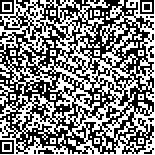| 摘要: |
| [摘要] 目的 探讨肺隐球菌病CT影像学表现与患者免疫状态的关系。方法 回顾性分析北京协和医院2014年1月至2019年9月48例肺隐球菌病患者的临床资料,按免疫状态是否正常分为免疫正常组23例和免疫受损组25例,比较两组间病变在CT分布、分型和各种伴随征象上的差异,同时分析其隐球菌相关接触史和临床表现。结果 咳嗽、咳痰是肺隐球菌病常见的症状。与免疫正常组比较,免疫受损组患者发热率较高(P<0.05),肺隐球菌病以外周分布和弥漫分布多见,免疫正常组CT病变外周分布比例高于免疫受损组,弥漫分布比例低于免疫受损组,差异有统计学意义(P<0.05)。免疫正常组CT表现结节肿块型比例高于免疫受损组,而实变型和弥漫混合型比例低于免疫受损组(P<0.05)。在CT各种伴随征象中,晕征、支气管充气征和空洞是较常见的伴随征象,其中免疫受损组支气管充气征比例高于免疫正常组(P<0.05)。结论 肺隐球菌病CT表现与患者免疫状态密切相关,但不同免疫状态肺隐球菌病患者在结节边缘、强化方式等方面也存在一定共性,识别这些异同有助于对肺隐球菌病做出早期诊断。 |
| 关键词: 肺 隐球菌病 计算机断层成像 |
| DOI:10.3969/j.issn.1674-3806.2021.09.08 |
| 分类号:R 445.3 |
| 基金项目: |
|
| Analysis of CT findings of pulmonary cryptococcosis in patients with different immune statuses |
|
HUANG Yao, SUI Xin, SONG Wei
|
|
Department of Radiology, Chinese Academy of Medical Sciences, Peking Union Medical College, Peking Union Medical College Hospital, Beijing 100000, China
|
| Abstract: |
| [Abstract] Objective To investigate the relationship between computed tomography(CT) imaging findings of pulmonary cryptococcosis and the pathients′ immune statuses. Methods The clinical data of 48 patients with pulmonary cryptococcosis in Peking Union Medical College Hospital from January 2014 to September 2019 were retrospectively analyzed, and the patients were divided into the normal immune group(23 cases) and the impaired immune group(25 cases) according to whether the immune status was normal. The differences in the distribution of lesions on CT, classification and various accompanied signs were compared between the two groups, and the history of exposure to cryptococcus and clinical manifestations were analyzed. Results Cough and expectoration were the common symptoms of pulmonary cryptococcosis. The patients in the impaired immune group had a higher fever rate than those in the normal immune group(P<0.05). The peripheral distribution and the diffuse distribution of lesions in the lungs were more common in pulmonary cryptococcosis. The proportion of the peripheral distribution of lesions on CT in the normal immune group was higher than that in the impaired immune group, and the proportion of the diffuse distribution in the normal immune group was lower than that in the impaired immune group, and the differences were significant between the two groups(P<0.05). The proportion of nodules and masses in the CT findings in the normal immune group was higher than that in the impaired immune group, while the proportion of the consolidation and mixed lesions in the normal immune group were lower than those in the impaired immune group(P<0.05). Among the various concomitant signs on CT, halo sign, air bronchogram and cavity were the more common concomitant signs in pulmonary cryptococcosis. Among these concomitant signs, the proportion of the air bronchogram in the impaired immune group was higher than that in the normal immune group(P<0.05). Conclusion CT findings of pulmonary cryptococcosis are closely related to the patients′ immune statuses. However, there are some similarities in nodule margin and enhancement manners for the pulmonary cryptococcosis patients with different immune statuses. Identifying these similarities and differences can help to make early diagnosis of pulmonary cryptococcosis. |
| Key words: Lung Cryptococcosis Computed tomography(CT) |

